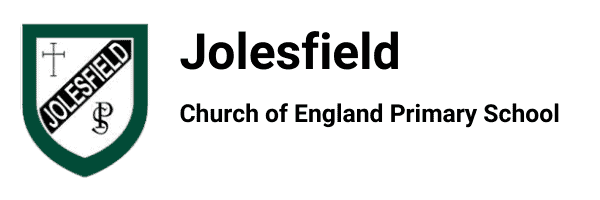computing
CURRICULUM

Computing
Intent
At Jolesfield Church of England School we recognise the increasingly important role that technology plays in society. As more and more of the world moves online, knowing how to access and use different software for specific purposes is vital for our pupils in order for them to be able to participate in learning and communication on a global digital platform. We deliver a well planned and stimulating whole school curriculum, following the well established Teach Computing scheme. Our children leave the school digitally literate with a deep rooted understanding of information technology. Children know how to stay safe and be respectful in the digital age. Our curriculum is carefully sequenced to build on prior knowledge. Independence and critical thinking skills are encouraged and valued. Opportunities are planned for children to be able to develop their digital skills and utilise them purposefully in other curriculum areas. Throughout the curriculum, we encourage communication and teamwork with a focus on the children developing and using a range of technical vocabulary. The key areas of development enable children to:
- Use technology safely, respectfully and responsibly. Understand the concept of privacy online and how ro report any concerns.
- Understand how computers and computer networks operate and how this enables collaboration and communication.
- To use a range of search technologies to gather information effectively and safely.
- Develop computational thinking. Children will develop their logical thinking and ability to solve problems and create solutions.
- Design, write and debug programs, using variables to achieve specific outcomes.
Implementation
- Staying safe and respectful online is at the heart of our computing curriculum. We integrate the Internet Legends scheme into our curriculum, all staff have received CPD on how to teach this successfully.
- Computing is taught every half term throughout the school. The scheme is sequenced to gradually develop both knowledge and skills throughout the childrens’ school journey.
- Our curriculum includes physical computing and making activities that offer tactile and sensory experiences to enhance learning. Combining electronics and programming with arts and crafts (especially through exploratory projects) provides pupils with a creative, engaging context to explore and apply computing concepts.
- We use a variety of activities to consolidate knowledge and understanding of the function and structure of programs, including debugging, tracing, and Parson’s Problems.
- Lesson planning is designed around supportive frameworks such as PRIMM (Predict, Run, Investigate, Modify, Make) and Use-Modify-Create. These frameworks are based on research and ensure that differentiation can be built in at various stages of the lesson.
- We are always looking to make cross-curricular links. This could be through poster design for a PSHE project, using codeable electronic equipment as part of our Design Technology curriculum or by developing photo editing skills during art lessons.
Curriculum
| Year 1 | Year 2 | Year 3 |
| Technology Around Us | IT Around Us | Connecting Computers |
| Year 4 | Year 5 | Year 6 |
| The Internet | Sharing Information | Communication |
| Year 1 | Year 2 | Year 3 |
Digital Painting Digital Writing | Digital Photography Making Music | Animation Desktop Publishing |
| Year 4 | Year 5 | Year 6 |
Audio Editing Desktop Publishing | Sharing Information | Communication |
| Year 1 | Year 2 | Year 3 |
| Grouping Data | Pictograms | Branching Databases |
| Year 4 | Year 5 | Year 6 |
| Data Logging | Flat File Databases | Spreadsheets |
| Year 1 | Year 2 | Year 3 |
Moving a Robot Introduction to Animation | Robot Algorithms An Introduction to Quizzes | Sequence in Music Events and Actions |
| Year 4 | Year 5 | Year 6 |
Repeating in Shapes Repetition in Games | Selection in Physical Computing Selection is Quizzes | Variables in Games Sensing |
CONTACT US
For all queries please contact Natalie Saunders or Debbie Smith in the school office on:
- (01403) 710546
- office@jolesfieldschool.co.uk
- Littleworth Lane, Partridge Green, West Sussex. RH13 8JJ
